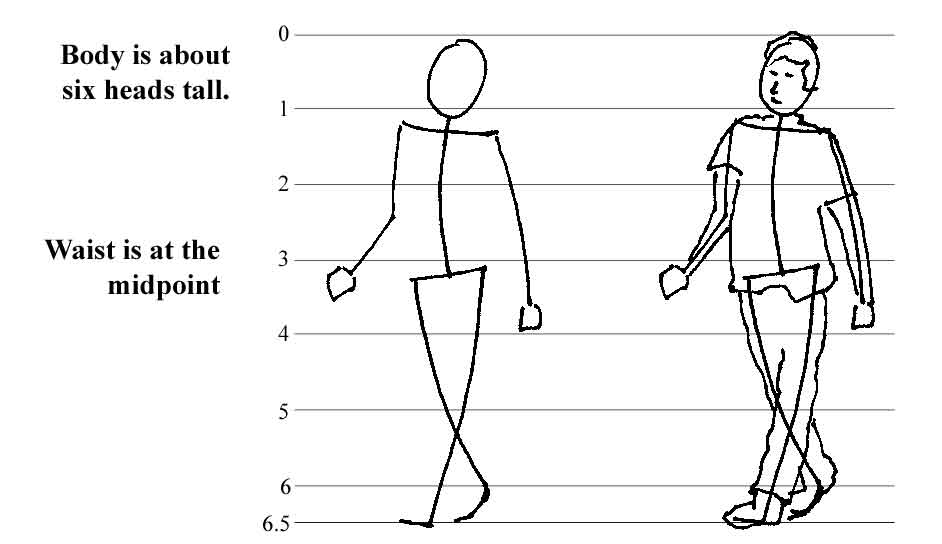On location
Seize the moment – When someone walks by who would look good in your painting, drop whatever you’re doing and sketch the figure on a separate piece of paper. Stare for a second, then look down at the paper and draw. Don’t look back up unless the figure is still in the same pose. Go for the characteristic “gesture” in one quick impression: main lines of body, legs, arms, head. Pay attention to angles, length of leg, turn of head, etc. Make notes of anything you observe but didn’t capture well in your quick sketch. Put into your painting later, when and where you need it.
From photos
Make sure the colors, angle and light source match your painting, and alter them if necessary. Don’t put too much detail in just because it’s available to you. Detailed, realistic paintings require detailed, realistic figures, but loose, impressionistic paintings require loose, impressionistic figures.
Scale the figure carefully so that it fits in. First determine where the figure’s head should go to fit the perspective of your painting. If you have buildings in your picture, place figure’s heads so that they could walk through the doors or see out the windows. In a typical, “level” landscape scene, a standing figure’s eyes should go on the eye line–the line that contains the vanishing point in one- or two-point perspective. In a level street scene, place all the figures’ heads on the eye line. If your landscape has a very high vantage point, say a street scene from a third story window, the heads of the figures on the street will have to be placed well below the eye level of the painting. If you’re painting a worm’s eye view, the heads will be above the eye level of the painting. Also, the figures in both cases will have to be foreshortened somewhat in order to look like they fit in.
Once you have found the right place for the figure’s head, determine how tall the figure should be–find the feet. Mark the top of the head and the bottom of the feet, and draw the figure in between. It helps to sketch the figure on a separate small piece of paper and hold it up to the painting to see if you have the size and placement right. The farther down the feet come, the closer the figure appears to be.
From memory
This is constructive figure drawing, a skill that was once taught in art schools but has fallen out of favor. Basically you draw a simplified skeleton, then add flesh and clothes. To draw the skeleton, make a simple stick figure whose body is about 6 or 7 “heads” high. When you like the figure’s pose, put clothes on it.


